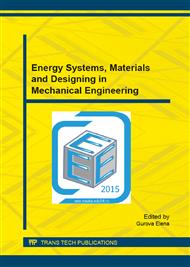p.33
p.38
p.44
p.51
p.56
p.62
p.67
p.73
p.78
Mathematical Model of Synchronous Generator without Damper Windings which is Equipped with an Automatic Stabiliser
Abstract:
The models of the synchronous generator for calculating the steady-state and transient regimes including the transients of stator windings of generator without damper windings have been presented. The ability to use different mathematical approximations of the generator models depending on the spatial distance of the disturbance point has been shown. The examples of the generator models without damper windings which is equipped with an automatic stabilizer have been given. To determine the currents and voltages as functions of time the state-space technique and Park – Gorev transformation have been used. Solutions are obtained by means of the program called integrated environment MathCAD Runge-Kutta method.It is possible to use these models in networks containing synchronous generators and also for the design of objects containing generators.
Info:
Periodical:
Pages:
56-61
Citation:
Online since:
September 2015
Authors:
Price:
Сopyright:
© 2015 Trans Tech Publications Ltd. All Rights Reserved
Share:
Citation:


